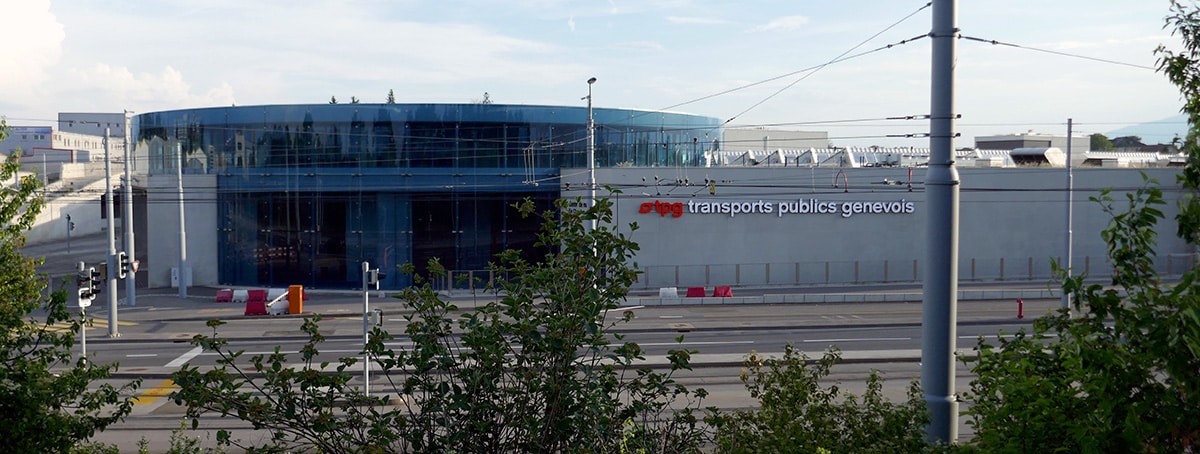Table of Contents
In the concentrated atmosphere of the SIT laboratory of the Geneva Public Transport (TPG), exceptional advances in cybersecurity (see our other article on the subject) for autonomous vehicles are taking shape. Quentin Matthewson, Consultant at TEAM PARTNERS, takes us behind the scenes of the European Niove project and unveils the aspirations of the Ultimo project, which promise to redefine the way we think about public transport.
The Geneva Public Transport SIT Laboratory: An Ideal Playground for Autonomous Vehicle Cybersecurity

The En Chardon depot of Geneva's public transport
The Geneva Public Transport depot En Chardon
Within the En Chardon site, the SIT laboratory of Geneva Public Transport has been transformed into an innovation hub where the Niove project has come to life. With a series of cyberattacks orchestrated on three separate environments, the researchers explored the limits of autonomous vehicle security. The full simulation allowed for actions otherwise prohibited, while the tests on Navya shuttles and in trams tested the vulnerabilities of these emerging technologies.
See our article on cybersecurity threats that threaten your business.
GNSS Attacks: A Risk to Passenger Safety
One of the most alarming experiments was the GNSS attack, which was able to shift the position of a vehicle. In the best-case scenario, the vehicle stops, but in the worst-case scenario, it could end up in the water, reminiscent of the dramatic scenes from "SPEED 2." These exercises, far from being a feat of hacking, served to understand and fortify the fragile ecosystem of autonomous vehicles. These simulated attacks make it possible to imagine the worst-case scenario of cyberattacks that could target autonomous public transport.
Ultimo Project: The Future of Operatorless Public Transport
The ambition of the Ultimo project extends beyond strengthening cybersecurity. It aims to equip public transport with autonomous vehicles, a revolution in the making. The main objective is to operate without a driver, but an equally important goal is to ensure full accessibility for people with reduced mobility, both in the use of the application and in the access to the vehicles themselves. A technology that would allow, among other things, on-demand accessibility and 24 hours a day.
Technology at the Heart of Autonomous Vehicles
Today's autonomous vehicles rely on a synergy between Lidar and image capture. Lidar, with its laser point cloud, allows for accurate mapping of the surroundings, guiding the vehicle through potential obstacles. However, the lack of human interaction poses a major challenge: how to integrate these vehicles into a shared environment with human users, where eye contact is essential?
Towards an autonomous future for vehicles
The excitement is palpable: a fully autonomous vehicle by 2025 would be a remarkable milestone. But the road ahead is fraught with challenges, including the seamless integration of these technologies into society. The Niove and Ultimo projects are giant steps towards this future, but they also remind us that innovation must always be balanced with prudence and inclusiveness.
But be careful, for Quentin, there is a big difference between making autonomous vehicles for public transport and autonomous cars
Autonomous vehicle cybersecurity is a fast-growing field, and Geneva Public Transport, with the help of expert consultants such as Quentin Matthewson, is at the forefront of this revolution. It remains to be seen how these innovations will transform our daily lives and our cities in the years to come.






